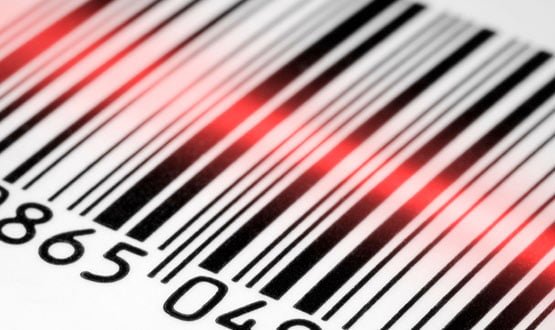The NHS has been told to implement barcoded wristbands by 2014. Daloni Carlisle asks why – and what the potential benefits will be.
Body text: Some English hospitals use red wristbands to identify a patient with known allergies. In parts of Wales, the same colour denotes a Welsh speaker.
Some hospitals write the ward name on the patient wristband – and have to change it with each patient transfer.
The potential for confusion and error is obvious and standardising wristbands has been a hop topic for some time now.
Promoting safer practice
In 2007, the National Patient Safety Agency issued a Safer Practice Notice after estimating that more than 2,900 of the 24,382 reports of patients receiving the wrong care were related to wristbands.
Standardising the design of patient wristbands, the information on them, and the processes used to produce and check them, would improve patient safety, it noted.
A year ago, the Department of Health put wristband errors on its list of “never events”. In effect, this means that hospitals can be fined for wristband errors; because commissioners can refuse to pay for a patient’s treatment if they suffer “severe harm/death” as a result of them.
It’s not just a patient safety issue, though. Standardised wristbands that can be read by AIDC (automatic information and data capture) technologies enable hospitals to automate other processes and drive up quality, safety and efficiency.
Now the Information Standards Board for Health and Social Care has approved a new information standard with which the NHS in England is expected to comply by September 2013.
It defines how to encode the NHS approved patient identifiers for identity bands into a two-dimensional bar code – the GS1 Data Matrix Symbol.
Scan it, track it
Neil Lawrence, AIDC project manager at NHS Connecting for Health, calls it a “technology-enabling standard.”
Providing standardised wristbands will enable NHS trusts to automate other processes such as bed management, phlebotomy, operating theatre management and medicines administration.
Lawrence says the new standard will not come as a surprise to many in the NHS as it formalises work that has been underway since the NPSA notice.
“We have been rolling out the GS1 standard since NPSA raised the issue. CfH procured a contract with GS1 [a global standard setting organisation] and it’s gone phenomenally well,” he says.
“It is fundamental to patient safety but it also enables the technology that allows us to automate other processes and to support patient level costing.”
His guesstimate, based on an informal email survey of 600 NHS contacts, is that the standard has already been taken up in around two thirds of NHS hospitals.
“For us, Nirvana would be to be able to track anything in the NHS, and not just patients. Where has an item been, who has used it, how old is it, when was it last cleaned and so on. Coding enables that.”
So why not everyone? “A lot of it is problems with patient administration systems,” says Lawrence. “If the feed in from the PAS is not available then there is development work that needs to be done by the IT suppliers.”
Leading Europe
While the drive for 100% uptake continues, Lawrence’s team is supporting a series of “first of type implementations” to test how effective the technology-enabling element can be.
“We are centrally funding a data collection exercises in hospitals, running a solution with a sponsoring provider and then going back to re-record the data,” he explains. In Bolton, for example, a medical tracking solution has showed potential savings of £750,000 a year.
Elsewhere, trusts are working on patient level costing solutions linked to standardised 2D bar codes, sterile surgical instrument tracking, automated goods receipting, and a hands-free medicines solution in anaesthesia as well as medication documentation tracking.
He is awaiting more results before he considers the best way to share them with the wider NHS – and indeed the global healthcare community.
“We are setting the pace for the rest of world to follow,” says Lawrence. “It is always good to be doing something that enabled the NHS to save money and to be the leader in what it does. That is something that sometimes gets lost in standards.”
The NHS standard is certainly welcomed by technology suppliers. Franck Riout, health marketing manager in Europe, Middle East and Africa for the global tracking technology and supplies specialists Zebra Technologies, agrees that the NHS is ahead of the rest of Europe.
“The UK has pushed really hard on 2D wrist banding for the last couple of years and now it is a must-have in hospitals,” he adds. “That enables a number of applications to develop to increase patient safety.”
Medicines management is the “hot topic” in the UK right now, he adds. “Barcoding enables nurses to give the right drug to the right patient at the right time – and to do it quicker.
“I think the future will be linking between everything done around the patient during a hospital stay and most hospitals are a long way from that right now. The challenge will be in how to use the information and in rethinking their processes.”
Next stop, RFID
It is the same ambition as is being articulated for RFID, which has an added benefit of being able to track real-time, rather than just when someone scans a barcode.
But Riout argues that 2D bar coding is a cost effective solution, especially where hospitals do not have an RFID capability.
“With RFID you do have the possibility to add in more information but we doubt that this is going to break through in next few years. The leap from nothing to RFID is much too big a technology question and a big cost,” says Riout. “Bar coding will be the transition to RFID in the future.”

